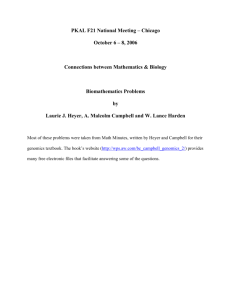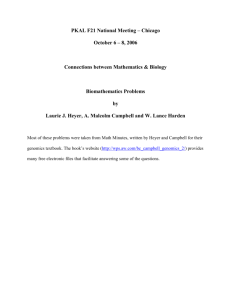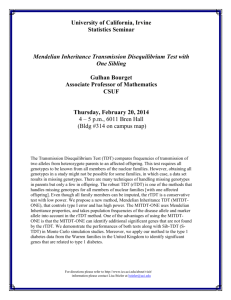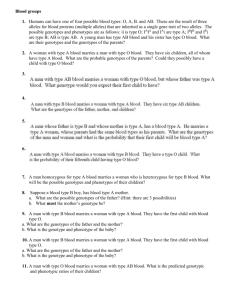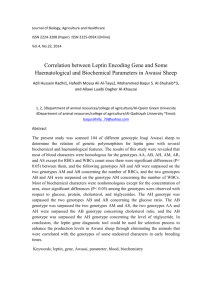Math Minute 2
advertisement
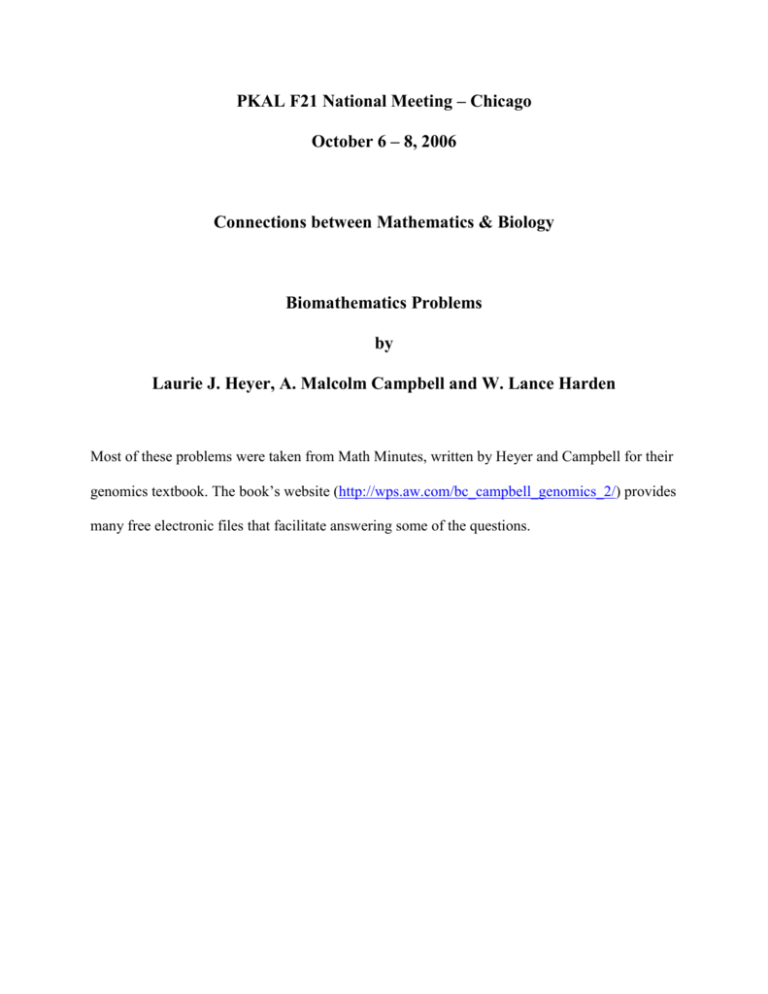
PKAL F21 National Meeting – Chicago October 6 – 8, 2006 Connections between Mathematics & Biology Biomathematics Problems by Laurie J. Heyer, A. Malcolm Campbell and W. Lance Harden Most of these problems were taken from Math Minutes, written by Heyer and Campbell for their genomics textbook. The book’s website (http://wps.aw.com/bc_campbell_genomics_2/) provides many free electronic files that facilitate answering some of the questions. Biomathematics Problem 4 How do you model population diversity? After eleven days of diatom sampling, investigators were able to genotype 607 cells, many of which had unique genotypes. What if the investigators had been able to genotype 1,000 times as many cells? Would they have found 1,000 times as many unique genotypes? Probably not. With continued sampling, a growing percentage of cells would have a previously sampled genotype. Since every cell in the diatom population cannot be sampled and genotyped, we must rely on sampling methods and mathematical tools to model population diversity. In this Biomathematics Problem, we explore how to use sample data to estimate the number of unique genotypes in the population, and predict the number of genotypes we should see once, twice, three times, and so on, in a sample of 607 cells. The figure shows the expected and observed numbers of genotypes that appear k times in our sample, for k between 1 and 7. Questions 1. How many unique genotypes are in the population? 2. How could the investigators determine the number of expected genotypes and their frequencies? 3. Create a simulation using the number you calculated for the question above. Using your simulation, repeat the sampling 10 times, and record the average number of genotypes occurring k times, for k between 1 and 5. 4. Would there be any value to increasing the number of repetitions to 100? To 1000 repetitions? 5. Based on your simulation, how many genotypes do you expect to observe 4 and 5 times? References A. Malcolm Campbell and Laurie J. Heyer. Discovering Genomics, Proteomics & Bioinformatics 2E. (February, 2008). Cold Spring Harbor Laboratory Press and Benjamin Cummings. <http://awl.com/genomics> A. Malcolm Campbell and Laurie J. Heyer. Instructor’s Guide to “Discovering Genomics, Proteomics & Bioinformatics”2E. (March, 2006) Benjamin Cummings Harden, Lance and Laurie J. Heyer. Do-It-Yourself Gene Assembly Gene Synthesis Optimization Program. <http://gcat.davidson.edu/IGEM06/oligo.html>. Accessed 24 August, 2006.
